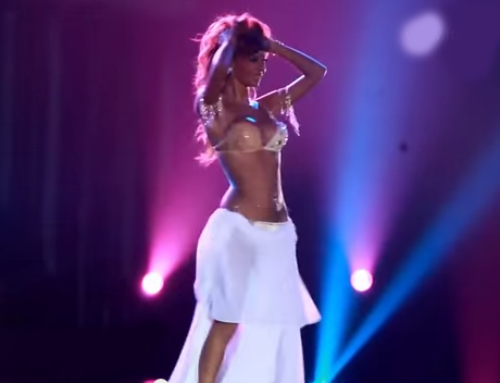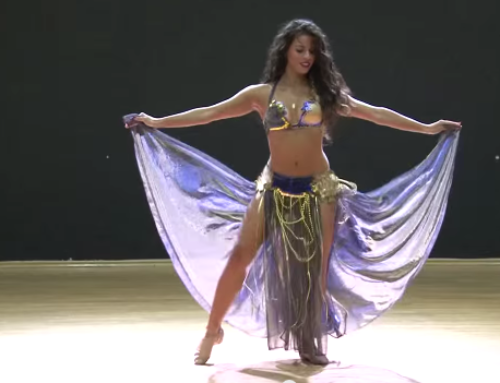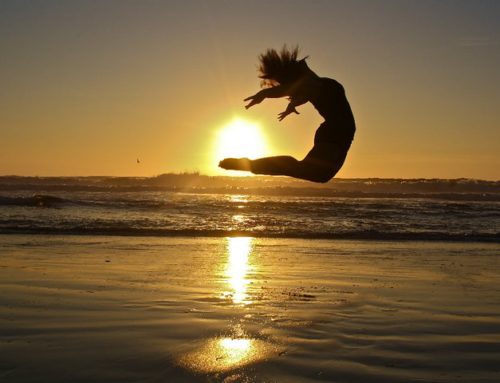Pole dance is one of the trendiest forms of fitness in the United States. In recent times, pole dance popularity has expanded to be included as a fitness exercise, performance art and sport in dedicatd dance studios across the country. Pole dance fitness is one of the most comprehensive fitness programs. Health literature expands on the many health benefits derived from pole dancing including increased core strength, cardio-aerobic workout, low impact exercise, improved flexibility; read about the benefits of, pole dancing benefits here.
Bendy Kate, Solo Pole Dance Video Project 2015
Bendy Kate Pole 2015
There are three distinct categories or types of pole dancing: performance art, sport (competition) and fitness (exercise). In this article, we will focus on pole dance fitness.
In the last ten years, pole dance fitness has come out of the shadows of shady strip clubs to join the ranks of other forms of fitness and dance exercise. Pole dancing benefits the whole body but the use of the arms and abdomin to pull, twist and suspend make pole dance fitness exercises incredible core, legs and upper body strength builders. Today there are pole dancing classes, studios, academies and competitions on every continent.
World Pole Sport Champion 2015 Winner
Galina Musina, Russia, dance@ World Pole Sport 2015
Pole dancers are recognized as athletes of incredible strength, flexibility and endurance. In addition, pole dance fitness exercises include a regimen of strength training, dance moves, push-ups, sit-ups, spins, climbs and inversions. Also, pole dancing incorporates athletic moves like climbs, spins, body inversions with the limbs of the body gripping the vertical pole. It requires a great deal of strength and training to become a proficient pole dancer athlete.
Pole Dance Artwork 1 to Tha Trickaz 2014
To Tah Trickaz
Types of Poles
A standard pole is a hollow steel or brass pole from floor to ceiling (stainless steel, chromed steel, brass, powder coating, titanium coating) that is 5 centimeters in the U.S. and 4.5 centimeters in Asia. Dancers use chalk, dry hand, iTac to grip the pole. A show pole is composed of clear plastic containing water, glitter or other reflective materials and sometimes used with strobe lighting.
Best World Pole Dance Moments
Part 1
Pole Origins
Pole dancing has early roots that go back 800 years to 12th century in Asia, India and the Middle East. In the early days of pole dancing, and in some countries even today, it was done predominantly by men. There were Chinese poles 3-9 meters laced with a rubber material and an Indian pole used to train wrestlers. Sometimes a smooth wooden pole was used, little clothing was worn similar to yoga attire or swimwear, no shoes. Athletes from other disciplines use pole dancing for developing coordination, concentration and stamina, strength and endurance like wrestling, judo and horse-riding. Pole dance fitness is considered one of the best ways to improve fitness.
Best World Pole Dance Moments
Part 2
History of Pole Dance in the United States:
There are early writings of exotic dance dating back to the Sumerians including belly dancing. In the United States, pole dancing dates back to the 1920’s traveling fairs, in and around the time of the depression. Dancers would entertain guests in tents with poles holding them up. Pole dancing eventually moved from the tent to bars and at burlesque shows.

(Photo of pole dancer, Anastasia Shukhtorova by Svetlana Belyaeva)
American interest in exercise and dance goes way back to pioneer days and has continued to the present. In the early 20th century, there were exercise bikes, squash courts and rowing machines built on the Titanic for travelers to exercise on route. There were some early pole dance videos and classes in the U.S. and Canada from the 1960’s to the 1990’s before it really took off around 2004. In recent years, pole dance fitness has become a mainstream fitness activity.

(Photo of Karo Swen’s Artwork)
K.T. Coates initiated an effort to get pole dancing recognized as an Olympic sport. Also, IPDFA founder, Ania Przeplasko and the IPDFA seek to have pole dancing recognized by the Olympic committee as an Olympic sport. Currently, pole dancing competitions include World Pole Sport Championships, US. Pole Federation Championship and the International Pole Masters Cup Championship.

(Photo of Anastasia Shukhtorova by Sergey Nemanov)
Pole Dance Magazines:
- Pole Spin Magazine
- Vertical Art And Fitness Magazine
- Pole 2 Pole Dance & Fitness Magazine
Sources:
- International Pole Dance Fitness Association History of Pole Dance
- Wikipedia Pole Dance
- Shape Why You Should Take a Pole Dancing Classes
- More Magazine Pole Dancing For Beginners
- Popsugar Why You Should Take a Pole Dancing Classes
- USA Today Top Exercisers of the ’80’s still have the moves
- Daily Mail Keeping their bodies ship-shape! Inside the Titanic’s GYM…
- Life Hack 10 Unexpected Health Benefits of Pole Dancing
- Mind Body Green 11 Thing I Wish Everyone Knew About Pole Dancing
- CNN Pole Dancing Helps Strip Off Pounds
- BBC Pole Dancing

(Photo of pole dancer, Anastasia Shukhtorova by Vadim Stein)
Watch & read more about Pole Dance here!





Leave A Comment
You must be logged in to post a comment.